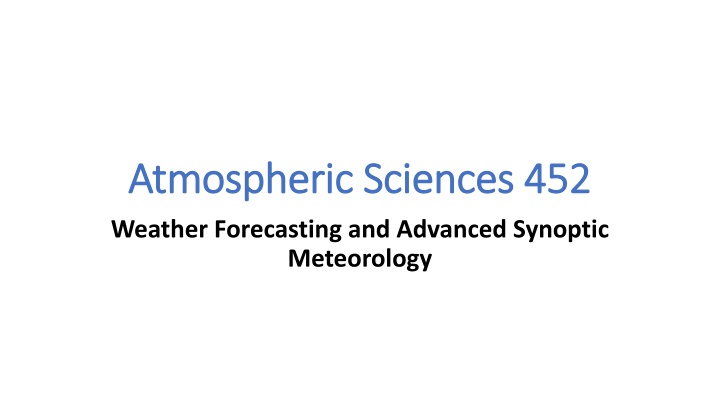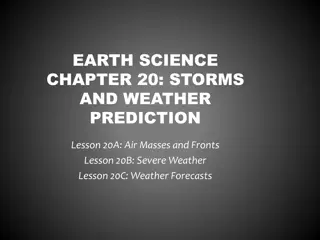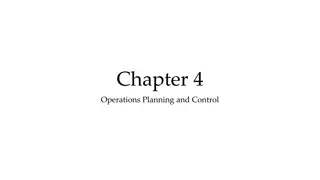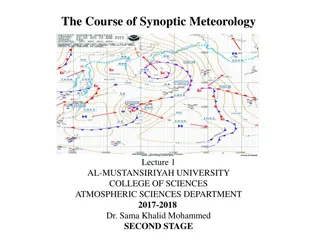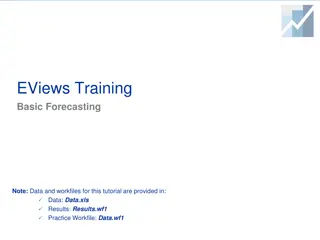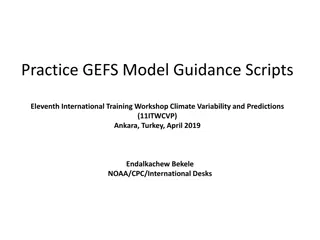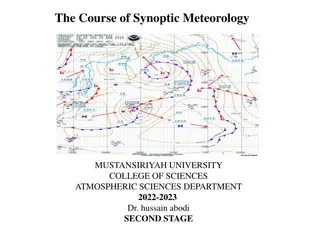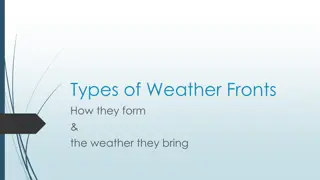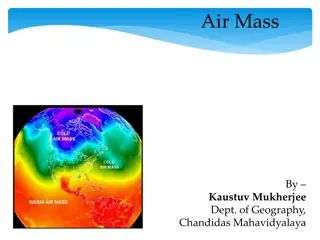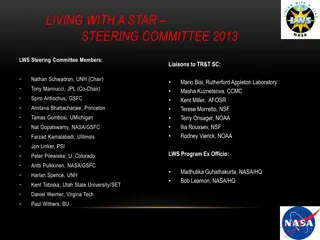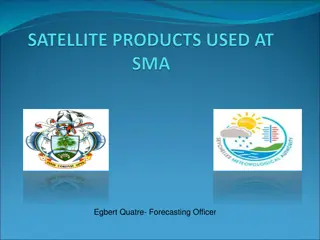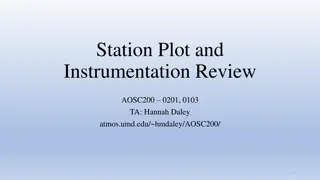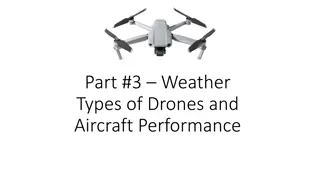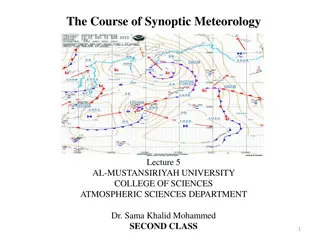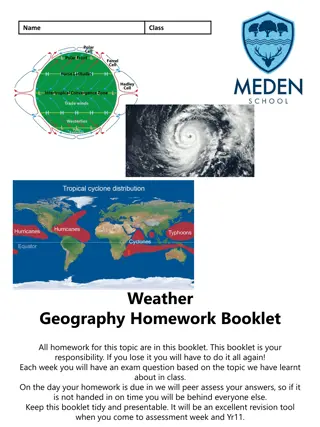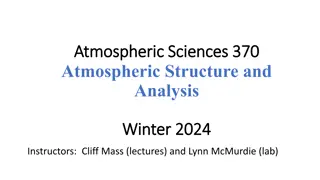Advanced Weather Forecasting and Meteorology Course
Delve into the tools, techniques, and principles of weather forecasting, numerical weather prediction, and synoptic meteorology in this advanced course. Learn about convective systems, radar interpretation, aviation meteorology, and more while integrating your knowledge from previous classes. Hands-on labs and discussions complement lectures, providing a comprehensive understanding of weather patterns and prediction models. Graded assessments, including labs, discussions, a midterm, and a final exam, along with supplementary materials, enhance your learning experience.
Download Presentation

Please find below an Image/Link to download the presentation.
The content on the website is provided AS IS for your information and personal use only. It may not be sold, licensed, or shared on other websites without obtaining consent from the author.If you encounter any issues during the download, it is possible that the publisher has removed the file from their server.
You are allowed to download the files provided on this website for personal or commercial use, subject to the condition that they are used lawfully. All files are the property of their respective owners.
The content on the website is provided AS IS for your information and personal use only. It may not be sold, licensed, or shared on other websites without obtaining consent from the author.
E N D
Presentation Transcript
Atmospheric Sciences 452 Atmospheric Sciences 452 Weather Forecasting and Advanced Synoptic Meteorology
Key Information Key Information Instructors: Professor Cliff Mass, 612 ATG, 685-0910, email: cmass@uw.edu Dr. Nick Bond, email: nicholas.bond@noaa.gov Class Hours: Lectures on MWF 1:30-2:20 PM, but occasionally will occur on Tuesdays or Thursdays. Lab: 1:30-3:20 PM (T, TH, F), 2:30-4:20 PM (MW) Office Hours: Anytime we are in our offices. Appointments can be made if needed. Email questions are always welcome.
Course Objectives Course Objectives Learn tools and techniques of weather forecasting Learn the details of numerical weather prediction Review advanced topics of synoptic meteorology Integrate your knowledge from undergraduate classes (bring it all together)
Course Outline Course Outline Introduction History of weather forecasting Overview of the forecast process Basic approaches to forecasting primary meteorological parameters Numerical weather prediction Data collection, assimilation, and model initialization Description of the major modeling systems Post-Processing of Model Output: MOS and other methods Ensemble and probabilistic forecasting Convective systems Review of structure and evolution Radar principles and interpretation. Forecasting thunderstorms and severe convection. Aviation meteorology Forecasting aircraft icing, turbulence, and obstructions to visibility.
Grading and extra materials forecasting, 1/4 labs and map discussion, midterm, final Lots of handouts and web-based materials (e.g., COMET modules)
